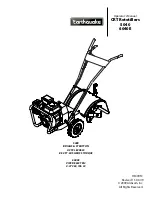
Low Temperature Operation
At low temperatures, fuel cells take longer to reach their peak readings of alcohol level. They also take
longer to recover from each positive sample before you can take another. To overcome this problem,
your PAS Vr. includes a thermostatically controlled heater which maintains the fuel cell temperature at
104°F (40°C).
The heater comes on automatically when the power switch is on. The fuel cell reaches its operating
temperature within a few minutes, although the exact time obviously depends on how cold it is to start
with. The orange HTR indicator cycles on and off as the thermostat regulates the fuel cell temperature.
The
sensitivity
of the fuel cell is not affected much by temperature. A cold unit will work just fine---it's
simply slower to respond and recover. You do not
have
to wait for the fuel cell to warm up.
Detecting Alcohol in Open Containers
Under suitable conditions, the PAS Vr. will detect alcohol in open containers, in vehicles, lockers and
other enclosed spaces. Please refer to the section on Enclosed Spaces for further details. (page 15).
CAUTION!
BEVERAGE SAMPLING: Be aware that certain citrus-based beverages have been
reported to give a positive reaction when sampled with a Passive Alcohol Sensor.
For Example: Citrus-Based beverages such as Mountain Dew, Mello Yello, Code Red, etc., may give
positive readings. It’s not clear if these beverages are in fact fermenting and producing low levels of
alcohol, or if certain ingredients are reacting chemically with the electrochemical fuel cell in some
manner to provide a positive reading.
To minimize confusion,
always retest
subjects (individuals) about
15 minutes after an initial positive
reading
to verify true alcohol presence and not the result of residual mouth alcohol from these types of
beverages. However, individuals may “spike” these drinks to cover up their actual alcohol consumption.
Wait 15 minutes and retest the subject (follow sampling instructions on page 9) to verify if they are
abusing alcohol.
Further,
always conduct an “air blank” between samplings to ensure the fuel cell sensor is clear of any
residual alcohol carried over from the prior sample. “Air Blanks” are done by simply activating the pump
and processing a sample of alcohol-free ambient air. Observe the display for approximately 20 seconds
after the sample pump has stopped. If no bars light up you may assume the sensor is free of any carry-
over and you may proceed with sampling the next subject (individual). See the section on “Clearing
Overlo
ads” for additional information.
13
















































